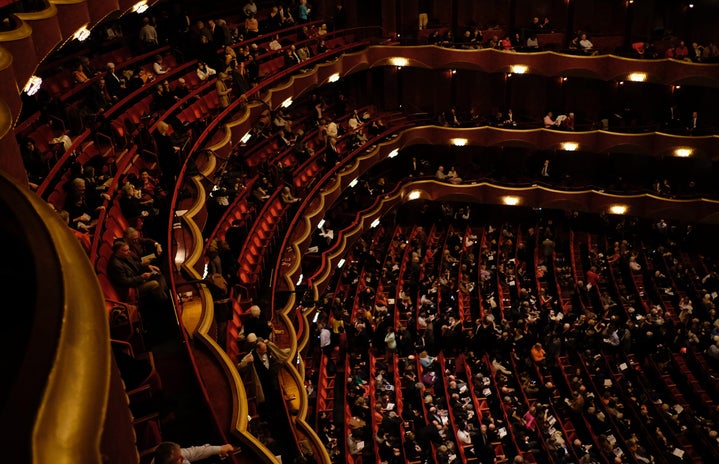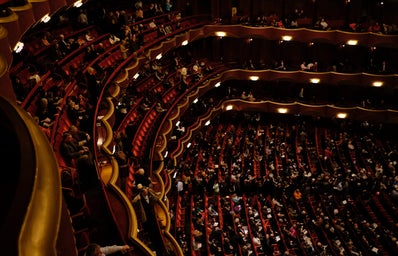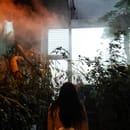Thanks to vast, interactive online forums such as Tumblr, Pinterest, and Instagram, sharing art has become a very easy and prolific activity in recent times. Ranging from fanart to original compositions, various artworks are simultaneously posted and viewed online. It is a blessing to be able to view a wide collection of art from all over the world for free, as well as being able to communicate with fellow artists and create groups. One aspect that can be easily picked out from this movement is the immense number of digital works. With the advent of bettered digital illustration tools of tablets of software programs, digital art has become popular and practiced by many users, young and old, across the globe. In fields such as design, digital has established itself as the norm. No more do we often see traditionally drawn signs or posters, reminiscent of the 1950s or 80s, in the streets. Although digital forms a great deal of art and design these days, traditional art is not to be considered as less superior.
Whether or not you are an artist, drawing (and/or painting) is a helpful, therapeutic exercise. Scribbling a simple doodle can be an alleviating experience in times of stress or boredom regardless of skill. For an upcoming artist, drawing in traditional is an important preliminary step. Instead of moving directly to digital, starting out on paper with pencil provides basic training – grasping foundational techniques of line, shape, pressure, etc.
Digital, of course, has a plethora of merits that some may find arguably “better” than traditional. One merit is certainly its compactness: a suitcase’s worth of drawing and painting supplies are all available in one place. As an artist who prefers to work in traditional only, my workspace is quite busy with several glass jars holding pencils and brushes, not forgetting to mention the drawers that house papers and other craft supplies. Working in digital also means infinite tools: no pencils have to be sharpened or paints to be bought if they run out. This partially explains why digital has come to dominate the modern art landscape. With many, especially college students, struggling financially in today’s dismal economic conditions, digital is far more cost-effective than having to buy a complete set of art supplies. In order to create a simple image, one can either pull out just one tablet, or arrange a whole collection involving paper, pencil, and some kind of color medium. Cleanliness is also a pro. Another big advantage is that it allows to go back to edit things; fixing is easy if you only have to press some keys (ctrl+Z).
Image courtesy of Systemax: Paint Tool Sai boasts a wide selection of tools that can be freely adjusted – all in one
But digital comes with its own disadvantages that may bear lasting consequences to health. Because of the blue light emitted from the screens, working in digital can seriously damage eyesight. In addition to impaired eyesight, it is also shown to wreak havoc on our circadian rhythms (responsible for attention and mood). One has to inevitably look at a screen for prolonged periods of time when drawing in digital, regardless of the task. Time moves surprisingly quickly when drawing; before you know it, an hour easily passes by when your mind is completely absorbed in work. Combined with the common experience of becoming completely absorbed in art making (as if the surroundings have been completely forgotten, the mind fixated to the project at hand), working in digital can be an unhealthy practice on the long run. Obviously being digital, tools are dependent on electricity/devices – they cannot be used once the battery runs out or the device goes defunct. This is particularly excruciating when the project being made is nearing completion (don’t forget to save!). With a sketchbook, one can freely create without having to worry about technological limitations or failures.
In traditional, one can directly feel the sensation of drawing. The pressure of a pencil against paper, for instance, can only be experienced in traditional. Although digital programs such as paint tool SAI closely emulate real tools, they lack the directed and unpredictable nature of traditional. It feels secure and liberating to glide over a surface, experimenting with chance effects. Traditional also allows artists to fully savor pigments. While digital offers a near-infinite palette of colors, from juicy neons to watery pastels, they can only be seen in one way. That is, they will appear the same regardless of real-life lighting. It is both entertaining and educational when mixing real colors, especially through paint, by finding the right shades and amounts to produce desired results. This is particularly useful for training in color theory, for choosing the right colors in design or composition. Traditional goes well with plein-air drawing/painting. Sketchbooks are arguably a must. Almost all artists carry one around to make sketches or record ideas. With a sketchbook, it is possible to go out (e.g. natural sites such as a forest) and make on-site sketches. Physical tools of color pencil, pastels, and such capture the atmosphere of the scenery. Image: digital (left) and traditional (right) have their own distinct touch; choosing the optimal medium is key (by writer)
In the end though, the choice of medium, traditional or digital, depends on how well it suits your style – is it the most comfortable to work with? Some digital artists prefer its quick and calculated application, while traditional ones like myself prefer tactility. Nevertheless, the first step is to practice in traditional. Though traditional requires more work when compared to digital, the efforts pay off once the skills have been mastered. Design does not always require digital; even design masterminds such as the late Luigi Colani, who is famed for his futuristic, technological creations preferred to work with pencil, paper and clay rather than design software. Shaun Tan, the creator of illustrated books such as The Arrival, The Red Tree, and Acedemy Award-winning animated short The Lost Thing (2010), is one of the few popular artists who solely works in traditional. Digital has not necessarily taken over the art and design world. No matter how advanced, set with cutting-edge features, digital tools are, they can never quite reach the unbounded nature of traditional. So why not take a sheet and a pencil, any would do, and have a go?


